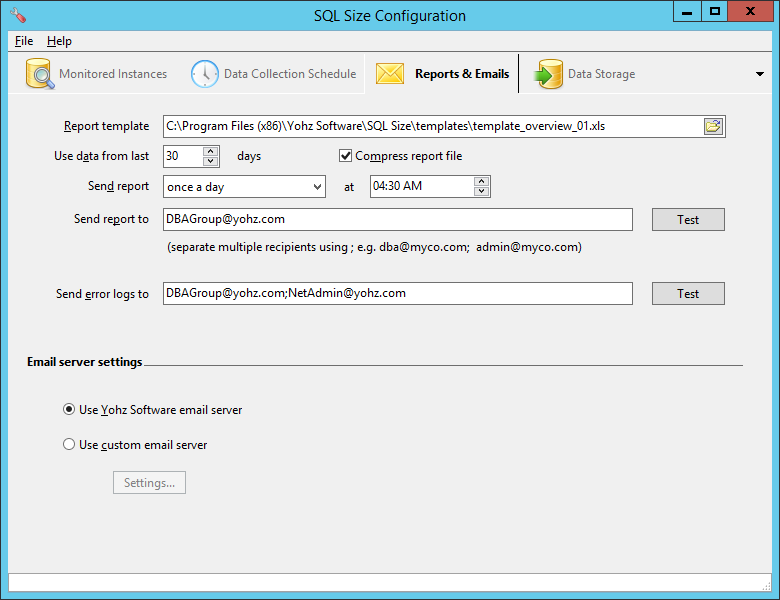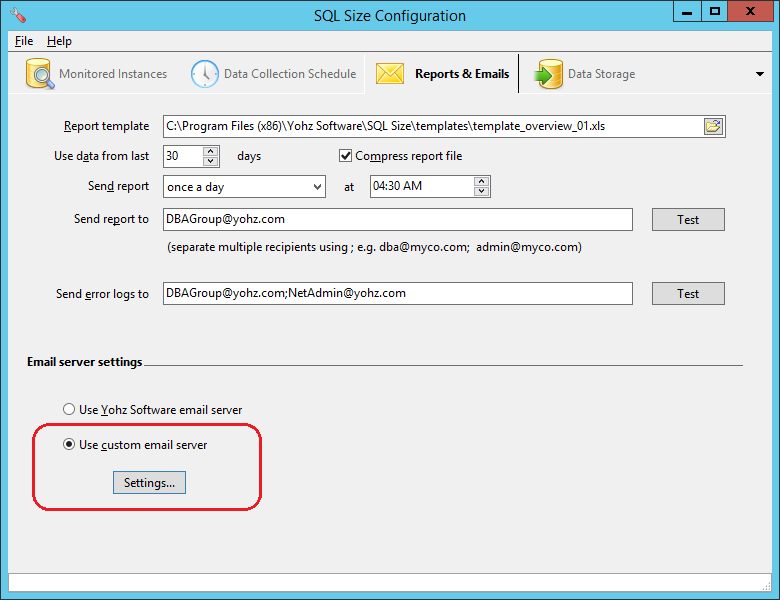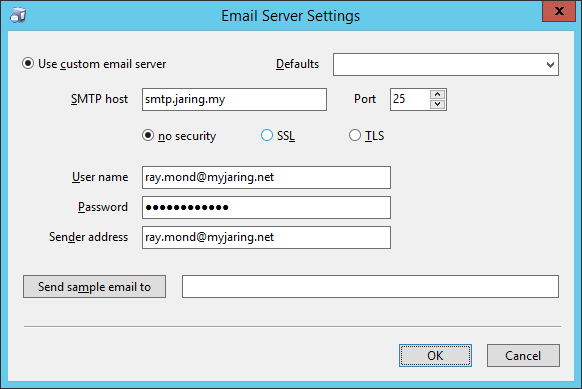 |
Introduction |
 |
User Guide |
 |
Alert functions |
 |
Mathematical functions |
 |
String formatting functions |
 |
Properties |
 |
Properties |
 |
Properties |
 |
Properties |
 |
Properties |
 |
Properties |
|
|
Reports and emails
The
SQL Size Agent can send reports via emails to one or more
recipients. The reports are in Excel spreadsheet formats, and can
be customized to your requirements. A template is included, and you
can use that template as a starting point to customize the layout
of your report. See this link on
how you can customize the report template.
On this page, you can select the report template to use, the
interval to calculate the growth statistics for, the frequency to
send the reports, and the report receipients.
Email server settings
You can choose to use our email server to send the reports, or to
use your own email server. If you prefer to use your email server,
select the Use custom email server option, and click on the
Settings... button.
Enter the details of your email server.
|




